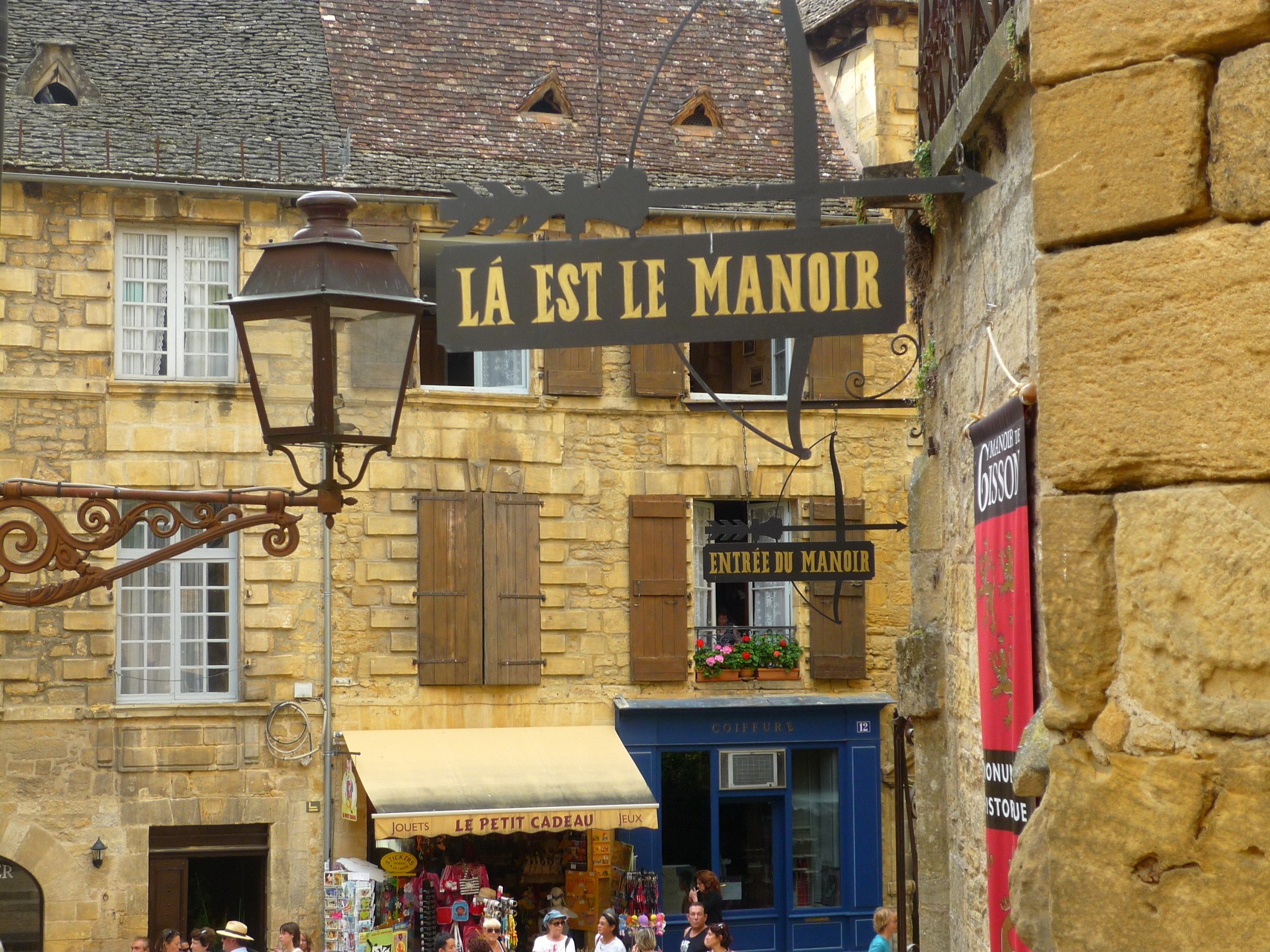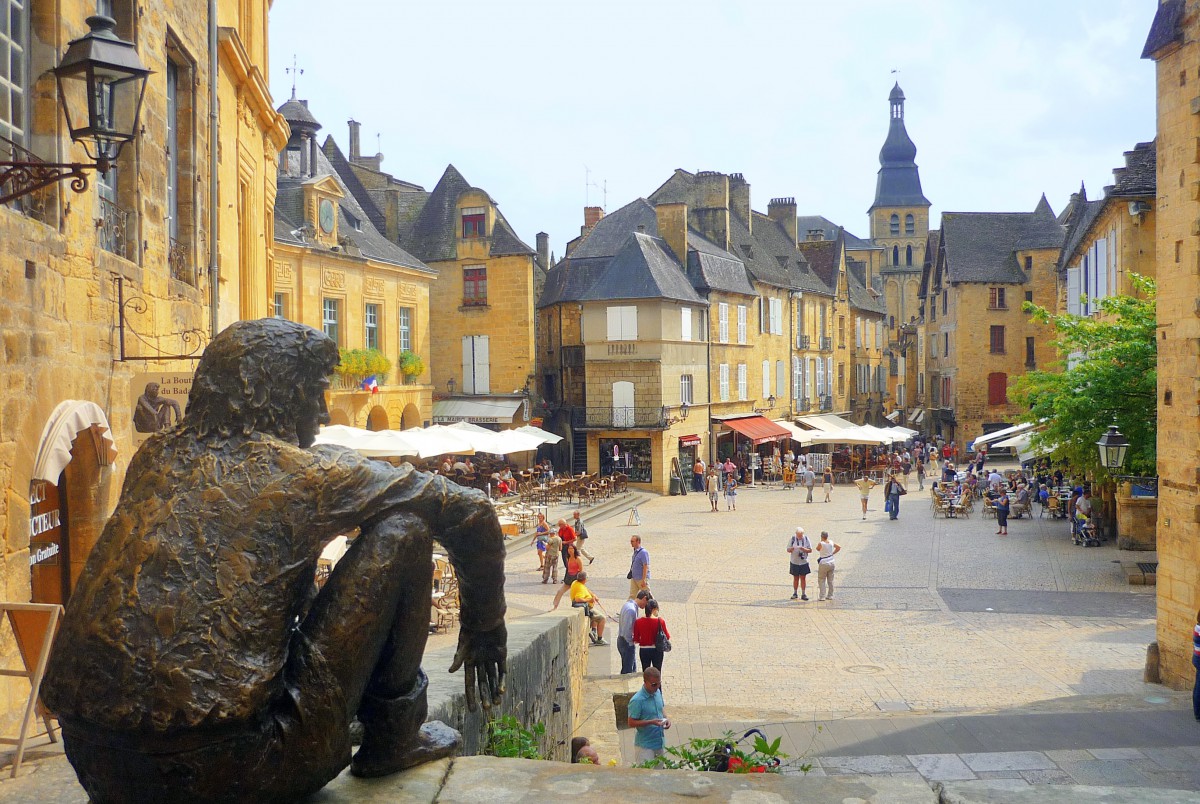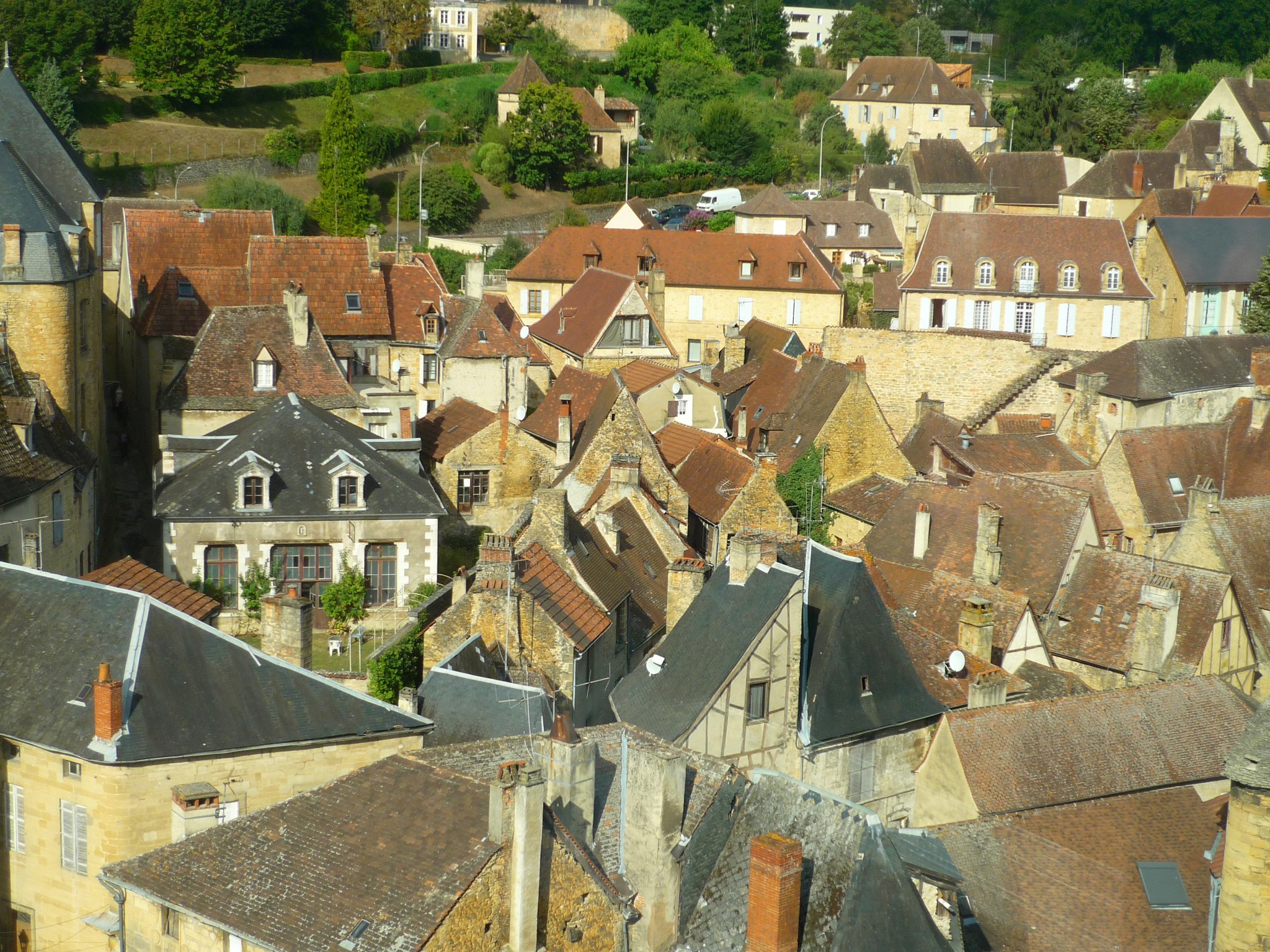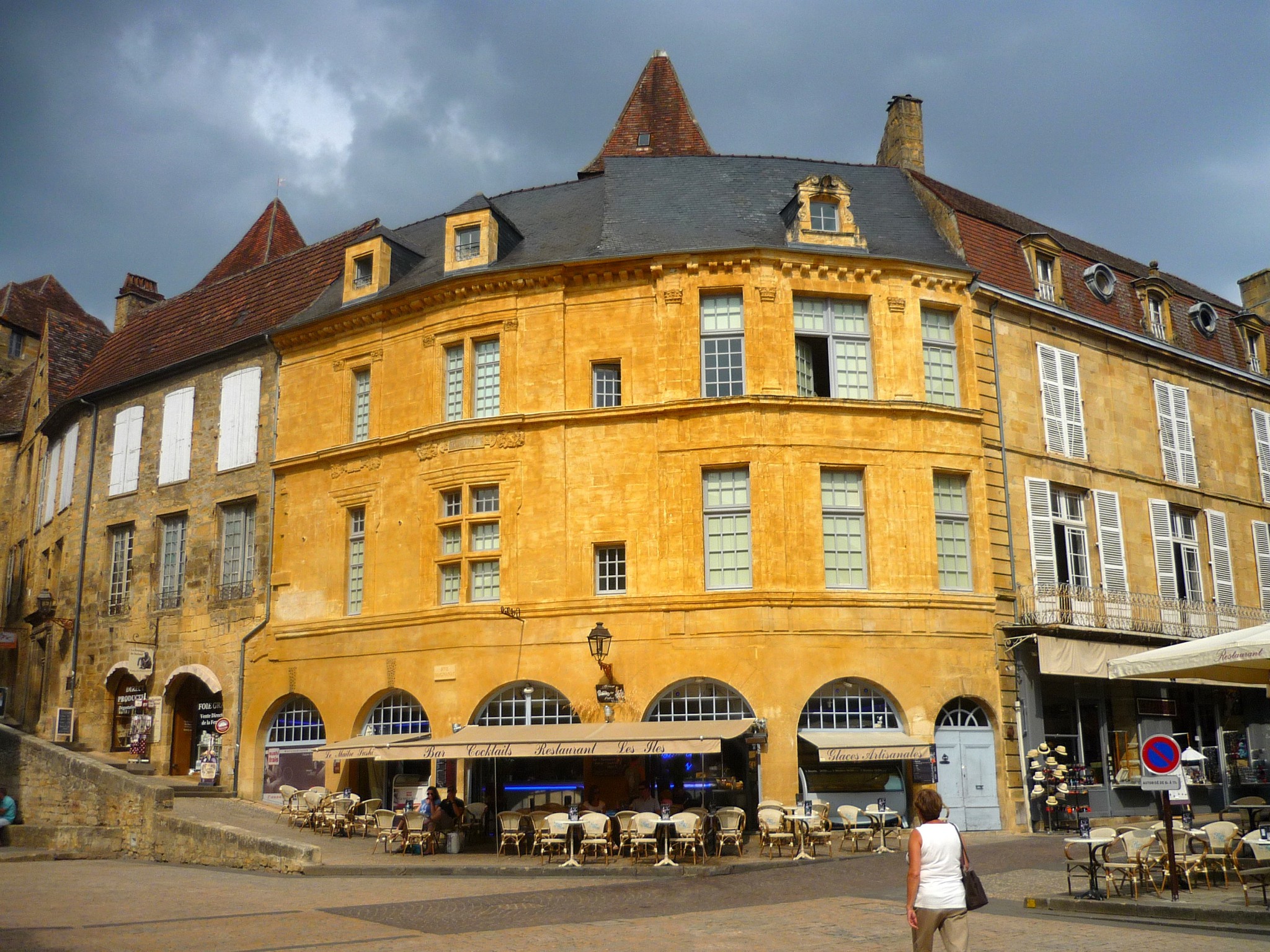Sarlat is a medieval town which developed around a prosperous Benedictine abbey whose origins are unknown. It seems that it existed already in the 9th century and was one of the six great abbeys of Périgord, along with Paunat, Belvès, St-Front de Périgueux, Brantôme and Terrasson. It was the only one to have been spared by the Viking raids, as it was located far enough away from the Dordogne and its environs. The first written mention of the abbey of Sarlat dates back to 1081.
Sarlat in the Middle-Ages

The monastic estate of Sarlat managed to remain independent and placed itself under the direct authority of the Pope in 1153. In the same year, the abbey’s estate encompassed all of Périgord Noir as well as the regions of Agen and Toulouse. In 1181, the King of France, Philip Augustus, committed himself to protecting the whole city. The abbey was rebuilt between 1125 and 1160 in a Romanesque architectural style, and its prosperity reached its peak during the 13th century.
In 1318, the abbey became the seat of a new diocese created by Pope John XXII and the abbey’s church (by this time called Saint Sacerdos) was consequently elevated to the rank of a cathedral. Bishops replaced the abbots and used Gothic architecture to renovate the cathedral once again. The completion of the actual edifice was only achieved in the late 17th century.
From the 14th century until the French Revolution (1789), authority over the town was shared between bishops and consuls, which caused numerous internal conflicts. The powerful Bourgeois of Sarlat elected four consuls in their midst and 24 ‘jurats’ (ancestors of our municipal councillors). Out of a population of 6,000 inhabitants, only 150 could really own to the noble title of ‘Bourgeois’. To become one of them, the candidate had to practice an ‘honourable profession’ (ie. not manual labour) and have done this for at least two generations.

The prosperity of Sarlat between the 11th and 13th centuries ended temporarily in 1279 when the Great Plague from the East struck the city, killing 2,500 people, which was in fact nearly half of the inhabitants. The plague-stricken were transferred outside the ramparts, to a place called Le Pontet and buried even further away at Le Roc Laumier. Confronted with such tragedy and hopelessness, the Sarladais (residents of Sarlat) threw themselves under the protection of the Virgin of Temniac, which coincided with the disappearance of the plague. A grateful people, the Sarladais decided to organise a procession that would take place each Pentecost Monday in remembrance of the covenant (when visiting the city, notice the fifty or so niches at the corners of streets, sheltering little statues of the Virgin Mary).
The Hundred Years’ War

As an episcopal city, Sarlat played a crucial role in the Hundred Years’ War. It served as a rallying point for the soldiers and also as a storage place for ammunition and food. Protected by strong castles nearby, such as Beynac and Castelnaud, Sarlat was also able to reach out and help other towns besieged by English armies: Belvès, Domme or Montignac. In 1360, Sarlat became English as a result of the Treaty of Brétigny for a period of ten years. It was a period of stability and prosperity, during which the first stone of Church Sainte-Marie was laid, on 23 April 1365. In 1370, Constable Bertrand du Guesclin came to Sarlat to lead a rebellion of Sarladais against the English authority in the name of the King of France, Charles V. When the Hundred Years’ War ended in Périgord with the Battle of Castillon in July 1453, the region was all but in ruins. However, Sarlat prided itself on never once being taken by the enemy.
The Wars of Religion
Between the Hundred Years’ War and the beginning of the Wars of Religion, Sarlat enjoyed a century of peace and regained prosperity. Half of its mansions were rebuilt; most of them were architectural masterpieces that can still be admired today. The bourgeois of Sarlat competed with each other and built sumptuous mansions topped by a nobility tower (‘tour de noblesse’): among the mansions are the Plamon mansion, the Chassaing (or Magnanat) mansion, the Vassal mansion, the Tapinois de Bétou mansion.
The Wars of Religion did not spare Sarlat. On 21 February 1574, protestant leader Geoffroy de Vivans and his 40 men seized Sarlat, making it fall for the first time in its history. On 12 May 1574, the city was taken back by the Catholics, led by the Lord of Puymartin. Over a decade later, in 1587, Viscount of Turenne (a Protestant) besieged Sarlat with a formidable – but disproportioned – army of 6 000 men and four cannons. The city was defended by 500 soldiers and somehow managed to resist for 14 days. The cannons opened a large breach in the ramparts, which can still be seen today on Rue du Siège, where a stretch of Sarlat’s walls survived demolition.
Turenne lifted the siege of Sarlat when the Lord of Hautefort threatened him. The conversion of Henri IV to Catholicism in 1593 ended the Wars of Religion in the region of Sarlat. Jean de Vienne, born as a pauper in Sarlat in 1557, had extraordinary success in becoming personal secretary to King Henri IV in 1590 and then to the president of the Court of Auditors (Cour des Comptes). His town-house can still be seen in the corner of Place de la Liberté.
From the 17th century till now
In 1652, a rebellion against the authority of Mazarin and young King Louis XIV marked the end of Sarlat’s peaceful and prosperous era. The town was occupied by the army of Condé and freed itself in a bloodbath. The 18th century was an era of embellishment and opportunity for the Sarladais. Gradually, large streets (les Boulevards) replaced the ditches and parts of the ramparts were dismantled. The French Revolution had little effect on Sarlat. Under Napoleon, Sarlat was no longer attached to the diocese of Périgueux, the Préfecture (head city) of the newly created département of Dordogne. As a consolation prize, Sarlat was raised as a ‘sous-préfecture’ of the Dordogne département, alongside Nontron and Bergerac.

Sarlat was often nicknamed ‘la belle endormie’ (Sleeping Beauty) during the 19th century, mainly due to its remoteness at the heart of Périgord Noir. From 1836 to 1840, the controversial street of Rue de la République was built, cutting the old town-centre in half. This street is now the main shopping axis of Sarlat.
In 1882, the railway station was inaugurated, from which point it was possible to reach Bordeaux. The 220 metre long viaduct of Pontet was then built to span across the valley and is visible from many points of the town.
After the Second World War, Sarlat rediscovered mass-tourism thanks to the Malraux Law of 4 August 1962. André Malraux was Minister of Culture in 1962 and a former resistance member in Périgord during the Second World War. This legal act greatly enhanced Sarlat’s medieval centre through the extensive restoration of most of its houses. It was also in 1965 that the municipalities of Sarlat and La Canéda merged into a new ‘commune’, obviously named “Sarlat-la-Canéda”.
- Find out more about Sarlat-la-Canéda on the blog
- Website of the Tourist Board of Sarlat-la-Canéda: http://www.sarlat-tourisme.com



